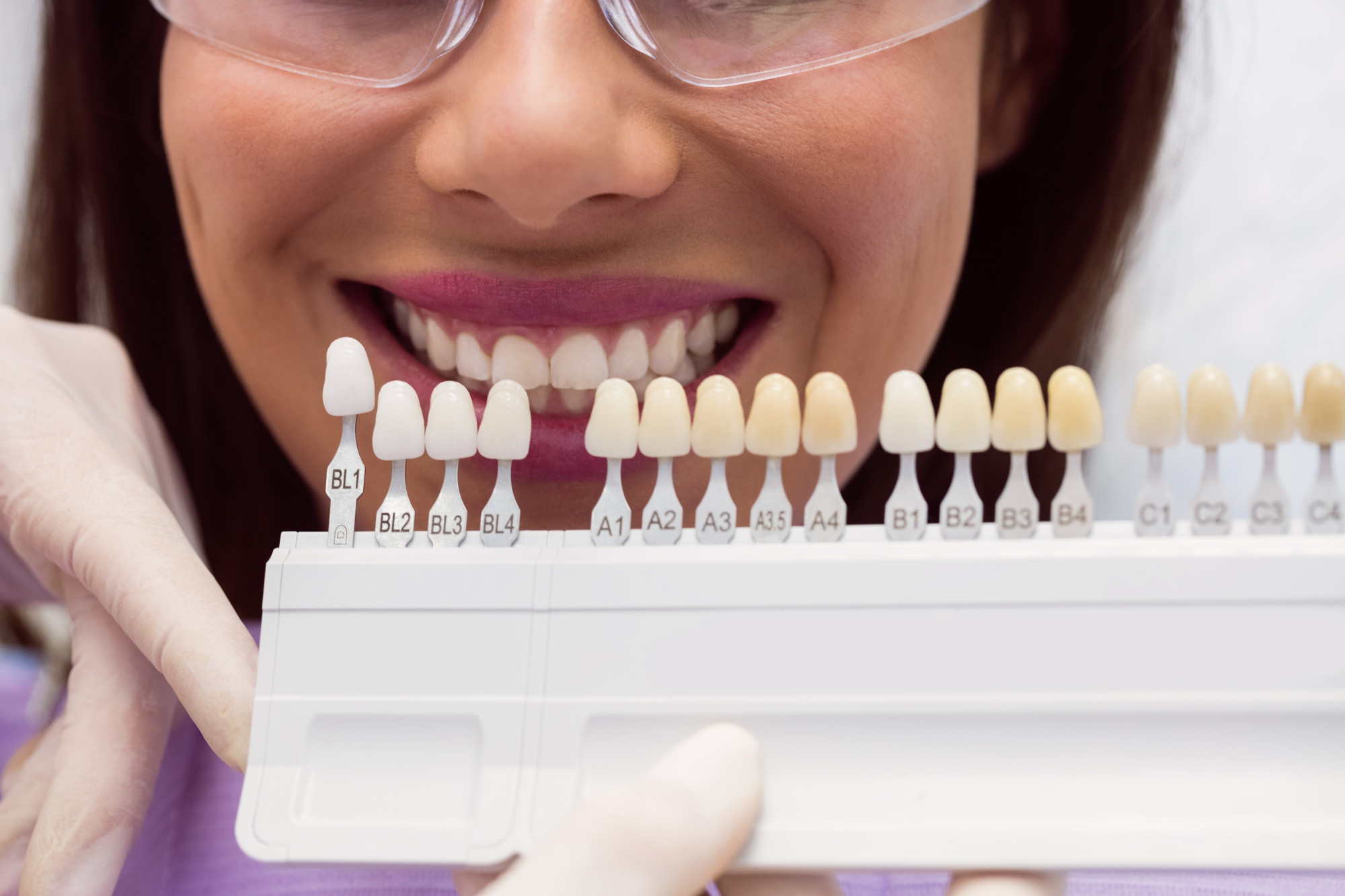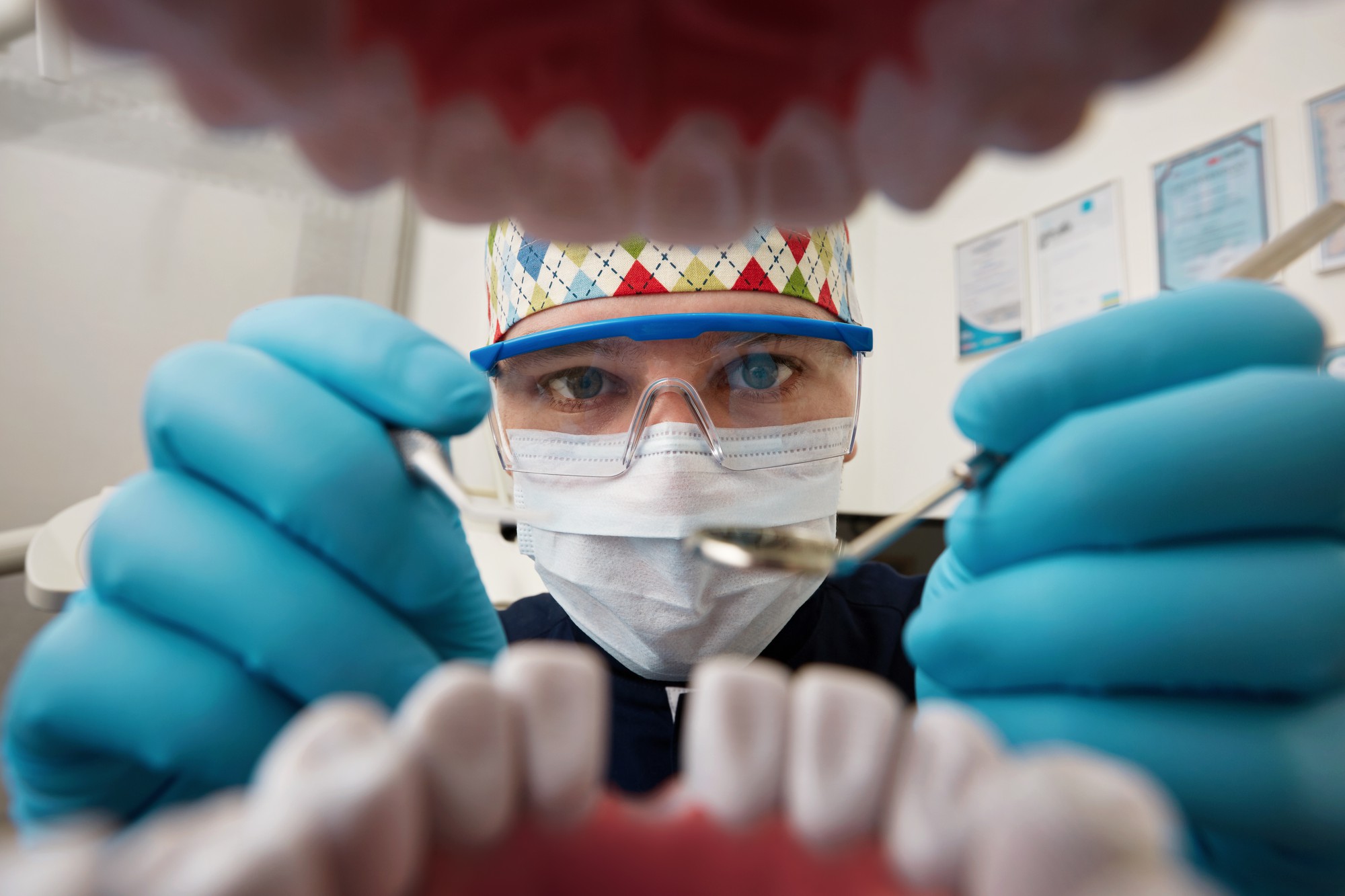Introduction to Dental Bridges
Dental bridges are a common and effective solution for replacing missing teeth, restoring both function and aesthetics to a patient’s smile. A dental bridge is essentially a false tooth, known as a pontic, that is anchored in place by adjacent natural teeth or dental implants. These anchoring teeth are called abutments, and the pontic bridges the gap left by the missing tooth or teeth, hence the name “dental bridge.”
Dental bridges have been used for many years to address tooth loss. The loss of a tooth can significantly impact a person’s oral health, appearance, and quality of life. Missing teeth can cause a shift in the remaining teeth, leading to bite problems, difficulty in chewing, and even speech issues. Additionally, gaps in the smile can affect a person’s self-esteem and confidence.
There are several compelling reasons why dental bridges are often chosen as a treatment option for missing teeth. First, they provide a relatively quick and straightforward solution compared to other restorative procedures such as dental implants, which may require more extensive surgery and a longer healing period. Dental bridges can typically be completed in just a few dental visits.
Second, dental bridges can restore the natural appearance of a patient’s smile. Modern dental materials and techniques allow for the creation of bridges that closely mimic the appearance and function of natural teeth. This means that once the bridge is in place, it can be difficult to distinguish from the patient’s natural teeth.
Third, dental bridges help maintain the structural integrity of the mouth. When a tooth is lost, the remaining teeth can drift out of position, leading to misalignment and bite issues. A dental bridge prevents this by filling the gap and providing support to the adjacent teeth.
The process of getting a dental bridge generally involves a thorough examination and consultation with a dentist to determine the most suitable type of bridge and to plan the treatment. The dentist will consider factors such as the location of the missing tooth, the health of the adjacent teeth, and the patient’s overall oral health and preferences.
Once the treatment plan is established, the procedure typically involves preparing the abutment teeth by reshaping them to accommodate the bridge. Impressions of the teeth are then taken to create a custom bridge that fits perfectly in the patient’s mouth. The bridge is fabricated in a dental laboratory and then fitted and adjusted by the dentist to ensure a comfortable and secure fit.
The importance of proper aftercare and maintenance for dental bridges cannot be overstated. Patients must practice good oral hygiene, including regular brushing and flossing, to keep the bridge and surrounding teeth healthy. Regular dental check-ups are also essential to monitor the condition of the bridge and to address any potential issues early on.
Dental bridges offer a reliable and aesthetically pleasing solution for tooth loss. They provide numerous benefits, including restoring the ability to chew and speak properly, maintaining the shape of the face, preventing remaining teeth from drifting out of position, and enhancing the overall appearance of the smile. In the following sections, we will explore the different types of dental bridges, the detailed procedure for getting a bridge, and the benefits and considerations associated with this restorative option.

Types of Dental Bridges
Traditional Dental Bridges
Traditional dental bridges are the most common type and are typically used when there are natural teeth on both sides of the gap created by the missing tooth. These bridges consist of one or more pontics (false teeth) held in place by dental crowns that are cemented onto the abutment teeth.
Materials Used: Traditional bridges can be made from various materials, including porcelain fused to metal, ceramics, and even gold. Porcelain or ceramic options are popular for their ability to blend seamlessly with natural teeth, offering both durability and aesthetic appeal.
Procedure: The process involves reshaping the abutment teeth to prepare them for the crowns. Impressions are then taken to create a custom bridge that fits perfectly. Once fabricated, the bridge is placed and adjusted for a comfortable and secure fit.
Cantilever Dental Bridges
Cantilever bridges are used when there are adjacent teeth on only one side of the missing tooth or teeth. This type of bridge is less common and typically used in areas of the mouth that are under less stress, such as the front teeth.
Design and Function: Cantilever bridges are designed similarly to traditional bridges but are supported by a single abutment tooth. This design can place additional stress on the supporting tooth, so careful consideration and planning are necessary to ensure long-term success.
Indications: These bridges are ideal in situations where there is a single healthy tooth next to the missing tooth. They are not recommended for areas that experience heavy chewing forces, such as molars.
Maryland Bonded Bridges
Also known as resin-bonded bridges or Maryland bridges, these are primarily used for replacing front teeth. Maryland bridges consist of a pontic with metal or porcelain wings on each side that are bonded to the back of the adjacent teeth.
Advantages: One of the main advantages of Maryland bridges is that they require minimal alteration to the adjacent teeth, preserving more of the natural tooth structure. This conservative approach makes them an attractive option for patients who are concerned about extensive tooth preparation.
Procedure: The procedure involves etching the backs of the adjacent teeth and the wings of the pontic to create a rough surface for bonding. A strong dental resin is used to bond the wings to the adjacent teeth, securing the pontic in place.
Limitations: While Maryland bridges are less invasive, they may not be as strong as traditional bridges. The bond can sometimes weaken over time, and the wings may become detached, requiring repair or replacement.
Implant-Supported Bridges
Implant-supported bridges are an excellent option for patients who have multiple missing teeth. Instead of being supported by natural teeth, these bridges are anchored to dental implants surgically placed into the jawbone.
Stability and Durability: Implant-supported bridges offer superior stability and durability compared to other types of bridges. The implants act as artificial tooth roots, providing a solid foundation for the bridge. This design helps prevent bone loss and maintains the integrity of the jawbone.
Procedure: The process of getting an implant-supported bridge involves several stages. First, dental implants are surgically placed into the jawbone. After a healing period of several months, during which the implants integrate with the bone, abutments are attached to the implants. Impressions are then taken to create the custom bridge, which is secured onto the abutments.
Suitability: Implant-supported bridges are suitable for patients with sufficient bone density to support the implants. They are an excellent choice for those seeking a long-term solution with a natural look and feel.
Choosing the Right Type of Bridge
Selecting the appropriate type of dental bridge depends on several factors, including the location of the missing teeth, the condition of the adjacent teeth, the patient’s overall oral health, and personal preferences. A thorough evaluation by a dental professional is essential to determine the most suitable option.
At Fortune Smiles Dental Care, we offer comprehensive consultations to help patients understand their options and make informed decisions. Our team of experienced dentists evaluates each patient’s unique situation, discusses the benefits and considerations of each type of bridge, and recommends the best solution to restore their smile and oral function.
By understanding the different types of dental bridges, patients can work with their dentists to choose the option that best meets their needs and ensures a successful, long-lasting restoration. In the next section, we will delve into the procedure for getting a dental bridge and the essential aftercare required to maintain its health and functionality.

Procedure and Aftercare
Initial Consultation and Planning
The process of getting a dental bridge begins with an initial consultation with a dentist. During this visit, the dentist will conduct a comprehensive examination of the patient’s oral health, including taking X-rays and possibly 3D scans to assess the condition of the teeth and surrounding structures. This examination helps in determining the most appropriate type of bridge and the specific treatment plan.
Patient Evaluation: The dentist evaluates the patient’s oral hygiene, the health of the remaining teeth, and the condition of the gums. This assessment is crucial for ensuring that the abutment teeth can support the bridge.
Treatment Plan: Based on the evaluation, the dentist develops a treatment plan tailored to the patient’s needs. This plan includes the type of bridge to be used, the materials for the pontic and crowns, and the procedural steps involved.
Tooth Preparation
Once the treatment plan is established, the next step is to prepare the abutment teeth. This preparation is crucial for ensuring that the bridge fits properly and functions well.
Reshaping Abutment Teeth: The dentist reshapes the abutment teeth by removing a portion of the enamel to create space for the crowns that will hold the bridge. This step is performed under local anesthesia to ensure patient comfort.
Taking Impressions: After reshaping the teeth, the dentist takes impressions of the teeth and the gap. These impressions are sent to a dental laboratory where the custom bridge is fabricated. In some cases, digital impressions using intraoral scanners may be used for greater accuracy and comfort.
Temporary Bridge Placement: While the permanent bridge is being made, the dentist places a temporary bridge to protect the exposed abutment teeth and maintain the gap’s aesthetics.
Fabrication of the Bridge
The fabrication process involves creating a custom bridge that fits perfectly in the patient’s mouth and matches the natural teeth. This process is usually carried out in a dental laboratory by skilled technicians.
Material Selection: The dentist and the patient select the appropriate materials for the bridge based on aesthetic and functional needs. Common materials include porcelain, ceramic, metal alloys, and composite resins.
Creating the Bridge: The dental technicians create the bridge using the impressions or digital scans provided by the dentist. The bridge is designed to match the shape, size, and color of the patient’s natural teeth, ensuring a seamless integration.
Quality Check: Before sending the bridge back to the dentist, the laboratory performs quality checks to ensure that the bridge meets the required standards of fit, function, and aesthetics.
Placement of the Permanent Bridge
Once the custom bridge is ready, the patient returns to the dentist for the final placement. This step involves removing the temporary bridge and fitting the permanent one.
Fitting the Bridge: The dentist carefully places the bridge over the abutment teeth to check the fit and alignment. Adjustments may be made to ensure a perfect fit and comfortable bite.
Cementing the Bridge: Once the fit is confirmed, the dentist cements the bridge in place using a strong dental adhesive. The dentist ensures that the bridge is securely attached and that the bite is correct.
Final Adjustments: After cementing, the dentist makes any necessary final adjustments to the bridge. This includes polishing the bridge and ensuring that it does not interfere with the patient’s bite or cause any discomfort.
Aftercare and Maintenance
Proper aftercare and maintenance are essential for the longevity and functionality of the dental bridge. Patients need to follow specific guidelines to keep their bridge and surrounding teeth healthy.
Oral Hygiene Practices: Maintaining good oral hygiene is crucial. Patients should brush their teeth at least twice a day and floss daily. Special flossing tools, such as floss threaders, may be needed to clean around the bridge effectively.
Regular Dental Check-ups: Regular visits to the dentist are important to monitor the condition of the bridge and the health of the surrounding teeth and gums. The dentist can identify any potential issues early and provide appropriate treatments.
Dietary Considerations: Patients should avoid hard and sticky foods that could damage the bridge or dislodge it. A balanced diet that promotes oral health is recommended.
Managing Discomfort: Some patients may experience minor discomfort or sensitivity after the placement of the bridge. This is usually temporary and can be managed with over-the-counter pain relievers. If discomfort persists, patients should contact their dentist.
Potential Complications and Solutions
While dental bridges are generally safe and effective, potential complications can arise. Being aware of these issues and their solutions is important for maintaining oral health.
Tooth Decay: The abutment teeth are at risk of decay, especially if oral hygiene is not maintained. Regular cleaning and dental check-ups are essential to prevent decay.
Gum Disease: Proper oral hygiene can prevent gum disease, which can compromise the stability of the bridge. Patients should be vigilant about gum health and seek treatment at the first sign of gum problems.
Bridge Damage: Although bridges are durable, they can be damaged by trauma or excessive biting forces. Patients should avoid habits like chewing ice or using teeth as tools to minimize the risk of damage.
Loose Bridge: If the bridge becomes loose, it can lead to discomfort and potential damage to the abutment teeth. Patients should contact their dentist immediately if they notice any looseness.
Longevity of Dental Bridges
The lifespan of a dental bridge depends on various factors, including the materials used, the patient’s oral hygiene practices, and regular dental care.
Durable Materials: High-quality materials such as porcelain fused to metal or all-ceramic bridges tend to last longer. Choosing the right materials can significantly impact the bridge’s longevity.
Patient Commitment: Patients who follow their dentist’s aftercare instructions and maintain good oral hygiene are more likely to enjoy long-lasting results. Commitment to regular dental visits also plays a crucial role.
Professional Care at Fortune Smiles Dental Care: At Fortune Smiles Dental Care, we provide comprehensive aftercare instructions and ongoing support to ensure the longevity of our patients’ dental bridges. Our team is dedicated to helping patients maintain their restorations and achieve optimal oral health.
By understanding the procedure and necessary aftercare for dental bridges, patients can ensure successful outcomes and long-term satisfaction. In the final section, we will discuss the benefits and considerations associated with dental bridges, highlighting their impact on oral health and quality of life.

Benefits and Considerations
Benefits of Dental Bridges
Restored Functionality
One of the most significant benefits of dental bridges is the restoration of functionality. Missing teeth can severely impact a person’s ability to chew and speak properly. A dental bridge fills the gap left by the missing tooth or teeth, allowing for normal eating and speaking functions to resume. By providing a stable and secure chewing surface, bridges enable patients to enjoy a wider variety of foods and maintain a balanced diet, which is crucial for overall health.
Aesthetic Improvement
Dental bridges offer a remarkable improvement in the appearance of a patient’s smile. Missing teeth can cause the face to sag and give a sunken appearance, making a person look older. By filling the gaps with natural-looking pontics, dental bridges help to restore the facial structure and create a more youthful appearance. Modern materials used in bridges, such as porcelain and ceramics, can be color-matched to the patient’s natural teeth, ensuring a seamless and aesthetically pleasing result.
Preventing Tooth Movement
When a tooth is lost, the adjacent teeth can drift into the empty space, leading to misalignment and bite problems. Dental bridges prevent this unwanted movement by maintaining the proper position of the remaining teeth. This not only preserves the patient’s bite but also helps to prevent further dental issues such as temporomandibular joint (TMJ) disorders and uneven wear on the teeth.
Maintaining Oral Health
A dental bridge can also contribute to better oral health by preventing the shifting of teeth and maintaining the proper alignment of the bite. This stability makes it easier for patients to maintain good oral hygiene practices, reducing the risk of decay and gum disease. Moreover, the placement of a bridge can help distribute the forces of chewing evenly, reducing the stress on the remaining natural teeth.
Considerations for Dental Bridges
Preparation and Invasiveness
While dental bridges offer many benefits, it is important to consider the preparation involved. Traditional and cantilever bridges require the reshaping of healthy abutment teeth, which involves removing some of the natural enamel. This irreversible process can make these teeth more susceptible to decay and other issues over time. However, newer techniques and materials are continually improving, making the process less invasive.
Longevity and Maintenance
Dental bridges, while durable, do have a finite lifespan and may eventually need replacement. The longevity of a bridge depends on the materials used, the patient’s oral hygiene practices, and the regularity of dental check-ups. On average, a dental bridge can last between 5 to 15 years with proper care. Maintenance involves regular brushing, flossing, and professional cleanings to prevent plaque buildup and ensure the health of the abutment teeth and gums.
Cost Considerations
The cost of a dental bridge can vary based on the type of bridge, the materials used, and the complexity of the procedure. While dental bridges can be a cost-effective solution for tooth replacement compared to implants, they still represent a significant investment. It is essential for patients to discuss the costs, insurance coverage, and potential payment plans with their dental provider to ensure they are fully informed and prepared for the financial aspect of treatment.
Potential Complications
Although complications with dental bridges are rare, they can occur. Potential issues include tooth decay under the crowns, gum disease, and bridge failure due to inadequate oral hygiene or excessive force on the bridge. Patients should be aware of these risks and work closely with their dentist to mitigate them through diligent care and regular dental visits.
The Role of Fortune Smiles Dental Care
Expertise and Personalized Care
At Fortune Smiles Dental Care, we pride ourselves on providing expert care and personalized treatment plans tailored to each patient’s unique needs. Our team of experienced dentists is skilled in the latest techniques and technologies for dental bridges, ensuring the best possible outcomes for our patients. We take the time to thoroughly evaluate each case, discuss the available options, and guide our patients in making informed decisions about their oral health.
Advanced Technology
We utilize state-of-the-art equipment and cutting-edge technology to deliver precise and effective dental bridge solutions. Our digital imaging and CAD/CAM systems allow for accurate diagnostics and the creation of custom-fitted bridges that blend seamlessly with natural teeth. This commitment to advanced technology ensures that our patients receive the highest quality care with optimal results.
Comprehensive Aftercare
Fortune Smiles Dental Care is dedicated to providing comprehensive aftercare to ensure the long-term success of dental bridges. We offer detailed instructions on maintaining oral hygiene, regular follow-up appointments to monitor the health of the bridge and surrounding teeth, and prompt attention to any issues that may arise. Our goal is to help our patients achieve and maintain a healthy, beautiful smile.

Conclusion
Dental bridges offer a reliable and aesthetically pleasing solution for replacing missing teeth, restoring function, and improving oral health. They provide numerous benefits, including the ability to eat and speak properly, enhanced appearance, and prevention of tooth movement. However, it is important to consider factors such as preparation, maintenance, cost, and potential complications when deciding on this treatment option.
At Fortune Smiles Dental Care, we are committed to delivering exceptional dental care tailored to our patients’ individual needs. Our expertise, advanced technology, and comprehensive aftercare ensure that our patients receive the best possible treatment and enjoy long-lasting results. By choosing us for their dental bridge needs, patients can trust that they are in capable and caring hands.
In summary, dental bridges are an excellent choice for many patients looking to restore their smile and oral function. With proper care and professional guidance, they can provide a durable and attractive solution that enhances overall quality of life.

